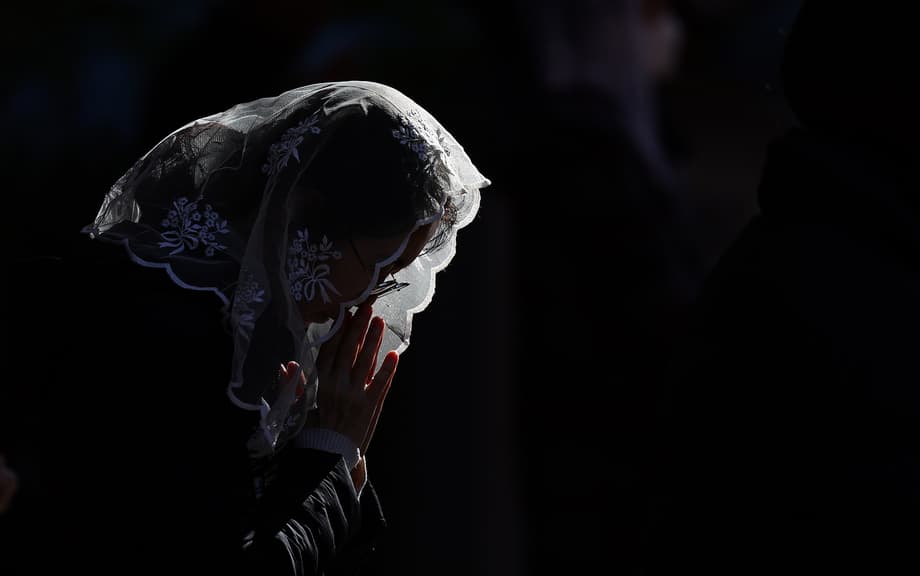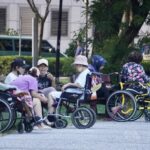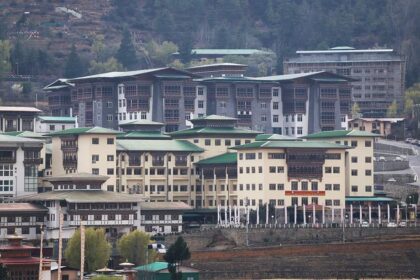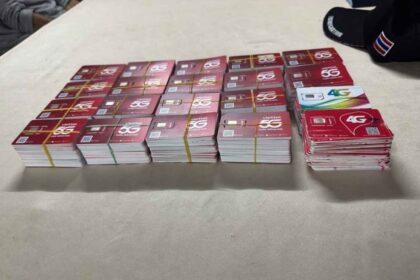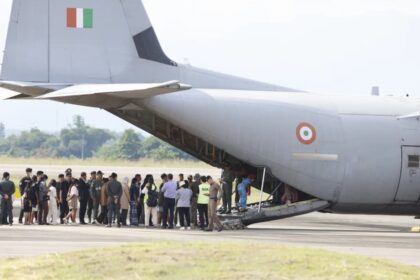The day silence falls across South Korea
Across South Korea, a familiar hush is about to take hold. On Thursday, more than half a million students will sit the College Scholastic Ability Test, widely known as Suneung, the once a year exam that can chart the course of university entry and, for many, their early careers. The nation slows its commute, holds aircraft on the ground, and eases the workday to give test takers every chance at calm and punctual arrival. For families and students, years of preparation converge on a single long day.
This year, 554,174 applicants are registered to take the exam at 1,310 testing sites nationwide. Education officials report the highest applicant count in seven years, helped by a demographic bump from the 2007 Golden Pig cohort. Third year high school students make up the largest group of examinees, with graduates and other test takers filling out the rest. The exam’s weight reaches far beyond campus gates. Admission to top universities remains closely tied to future opportunities, which magnifies the stakes for students and parents.
Doors open early and the schedule is unforgiving. Candidates must arrive by 8:10 a.m., and the exam day runs to 5:45 p.m. Quiet streets, late opening stock markets, and special transport are now standard features of Suneung week. The goal is simple, create orderly conditions so students can focus on the test rather than the traffic outside.
What happens on test day
For test takers, the morning balance is routine and urgency. Many leave home before dawn. Those at risk of being late can call 112, and police dispatch riders and patrol cars rush them to assigned sites. The National Police Agency plans to deploy more than ten thousand officers for traffic control and escorts, with more than two thousand patrol vehicles positioned near schools. If a student reaches the school gates after 8:10 a.m., entry is not permitted and the year’s opportunity is gone.
Sound control is a signature feature. Noise around test centers is discouraged, heavy equipment sits idle, and honking near schools is discouraged. The quiet reaches the skies during the English listening section. From 1:05 p.m. to 1:40 p.m., takeoffs and landings pause nationwide. Aircraft already airborne must stay above 3,000 meters. Authorities reschedule dozens of flights, including both domestic and international services, to secure silence. Drone flights and low level military drills are also paused during that window.
Transit agencies add capacity to keep traffic flowing. In Seoul, the subway runs add 29 extra trips between 6 a.m. and 10 a.m., and the city has 646 shuttle vehicles ready to ferry late runners to their seats. Bus and taxi drivers have been asked to avoid sudden braking and horn use near schools. The Kospi, Kosdaq and Konex open at 10 a.m., an hour later than usual, to ease the morning commute. Government offices shift start times as well, so roads are clearer when students need them most.
Inside the exam
Suneung is designed to measure readiness for college based on the national high school curriculum. The core sections are Korean language, mathematics, English, and Korean history. Students also choose additional subjects from social studies or science, and many, though not all, add a second foreign language or classical Chinese. Korean history is mandatory for everyone. Most questions are multiple choice. The mathematics test includes a small set of short answer problems. Calculators are not allowed, which makes time management and setup especially important in math.
The day is long, with five sessions stretching across the morning and afternoon. Each subject block runs roughly 80 to 107 minutes, with short breaks between sections and a lunch break around midday. The English test includes a listening portion in the early afternoon, the reason flights pause nationwide. English is graded on an absolute scale, while most other subjects use standardized scores that place students on a national curve. The standard nine tier ranking produces fine distinctions at the top, and tiny score changes can translate into different university prospects.
Exam security is rigorous. Question writers, a mix of university professors and high school teachers, work under strict isolation for weeks before the exam. Test papers move under seal to local education offices, then to schools before dawn. Each testing room typically seats fewer than thirty candidates with two or more proctors present. Proctors undergo protocol training the day before the exam. Testing fees vary by the number of sections a candidate selects, and local education offices assign each student’s site and seat, which are revealed only the day before.
Why pressure runs so high
Suneung is central to how South Korea assigns access to prestige universities. The exam is recognized by all major institutions, and performance can influence internships, scholarships, and long term opportunities. Admission to Seoul National University, Korea University and Yonsei University, often grouped under the acronym SKY, remains the goal for many applicants. Families invest heavily in preparation, and students face a culture that rewards exceptional results in one intense moment each November. That mix of high aspirations and limited seats creates a pressure few other exams match.
Private education fills much of the gap between regular classes and competitive targets. Cram schools, known as hagwons, run late into the evening, and some students in competitive districts choose to leave high school early, earn a qualification exam for a diploma, and spend a year focused only on Suneung. Costs can run into tens of millions of won for full year programs that bundle classes, lodging, and practice tests. The approach appeals to families who believe a clean focus on Suneung is more efficient than balancing school grades, activities and exam prep, although it can add stress and widen equity concerns.
Debate over content and fairness has persisted for years. The education ministry moved to scale back the hardest so called killer questions that often appeared in math and Korean language, arguing that items requiring university level knowledge skewed the playing field. Longer term changes are planned, including shifts to subject choices and integrated studies, which would change how students prepare. The larger tension remains, how to signal excellence while keeping the exam manageable and aligned with the high school curriculum.
Health guidance and the lure of study drugs
Doctors and school counselors urge a pivot in the final 24 hours. The advice is straightforward, close the books early, sleep before midnight, and aim for six to eight hours of rest. Wake up on the same schedule as Thursday’s test. Avoid energy drinks and strong caffeine late in the day. Eat simple, balanced meals, and skip heavy late night snacks. A short walk, stretching, deep breathing and brief breaks can help manage jitters without tax on the mind. With a wide gap between daytime highs and evening lows in late autumn, students are also reminded to dress in layers and guard against colds.
Anxious students seeking an edge sometimes look for shortcuts. Pharmacies in districts dense with cram schools, especially in southern Seoul, report rising inquiries about methylphenidate, a prescription medication used for attention deficit hyperactivity disorder. Psychiatrists warn that healthy individuals do not gain reliable cognitive benefits from this drug, and side effects such as insomnia, heart palpitations and anxiety can harm performance on the actual day. Insurance data show the highest prescription rates for ADHD medications among teenagers, followed by people in their twenties, with the affluent districts of Gangnam, Seocho and Songpa at the top of the charts. Medical professionals caution that no pill can replace rest, routine and clear focus in the final stretch.
Rituals, gear and small comforts
The practical checklist grows specific in Suneung week. Candidates must bring their admission slip, ID, lunch and stationery permitted by the rules. Only analog watches with hour and minute hands are allowed in testing rooms. Mobile phones, smart watches, wireless earphones, Bluetooth devices and any electronics that can store data or transmit signals are banned. Since 2006, the exam authority has issued an official mechanical pencil to each test taker to reduce hidden device risks. Even so, secondhand markets often see brisk trade in official pencils and practice sets from prior years. Some students pick up snacks that carry a whiff of tradition, including sticky rice treats and yeot candy that many consider a symbol of persistence and good luck.
Food is both fuel and comfort. Warm, familiar lunches help steady nerves during a long day when cafeterias are closed. Wang Sung jun, an artificial intelligence researcher who took the exam in 2014 and 2015, recalled what mattered most to him at midday.
It was really important to bring a warm, comforting lunch when I took the exam, too. My mom packed foods that were easy to digest, such as rice porridge and dried seaweed. It was not about having something special. It was about eating something familiar, so I would not get sick on the important day.
Symbols of encouragement reach into pop culture as well. Students trade photocards of favorite idols, attach stickers of campus crests to notebooks, and carry lighthearted charms. Parents and grandparents often turn to faith. Temples and churches fill with prayers, some offered daily for a hundred days before the exam. Sites like Doseonsa in northern Seoul and Gat Bawi in Daegu draw families who bow, light candles, and whisper the names of their children, a ritual handed down from one cohort to the next.
For some teenagers, small tokens serve as private anchors in a tense week. Kang, a high school senior in Jeju who has prepared a stack of idol cards for the big day, described why she brings them along.
We take photocards of idols who went to top universities because these are like our versions of talismans. Looking at a favorite card during Suneung and other tests takes the pressure off.
After the bell, scoring and next steps
When the final section ends at 5:45 p.m., the quiet gives way to relief at school gates. Underclassmen who had a day off often gather to cheer their seniors. Many students go straight home to compare answers. Test booklets and answer keys are posted in real time after each section, and candidates who marked their choices on the back of their admission slip can estimate standardized scores and percentiles. Cram schools publish cutoff predictions for major universities by late evening. These estimates guide early outreach and consultation in the days that follow.
Official scores are scheduled for release on December 5. Students on early admission tracks, known as susi, must submit their test records by December 11. Those applying on the regular track, known as jungsi, submit scores by December 31. During the brief lull, restaurants, salons and amusement parks offer small discounts to examinees who show their admission slip, a lighthearted nod to the years they invested to reach this day.
Why a country pauses for one exam
Suneung plays a singular role because it standardizes assessment across a diverse school system. Teachers and professors from across the country craft a single measure of college readiness tied to the national curriculum, and universities can compare students from different schools with confidence. The result is an exam day that looks like a state function. Police direct traffic, pilots adjust routes, and public servants shift schedules. The public honors the effort by reducing noise and clearing roads, so the test is about knowledge rather than circumstance.
This national ritual also exposes the strain in a system where a few hours can influence years of planning. Students sit for mock tests, build stamina through long study days, and compete in a narrow band at the top. The private education market grows around that demand. Officials have pushed to reduce extreme question difficulty, widen alternative pathways and adjust subject choices. The exam’s core purpose remains the same, deliver a fair, curriculum based standard for admissions while society works to relieve unhealthy pressure where it can.
Key Points
- 554,174 students will take Suneung this Thursday at 1,310 test sites across South Korea.
- Doors close at 8:10 a.m.; the exam day runs to 5:45 p.m. with five subject sessions and breaks.
- Seoul adds 29 subway runs between 6 a.m. and 10 a.m.; 646 city shuttles stand by for late runners.
- All takeoffs and landings pause from 1:05 p.m. to 1:40 p.m. for the English listening section; planes in the air stay above 3,000 meters.
- Stock markets open at 10 a.m., and public agencies delay start times to ease traffic near schools.
- Most sections are graded on a curve; English uses absolute grading. Korean history is mandatory.
- Question writers work in isolation before the exam; test papers move under seal and arrive before dawn.
- Doctors urge rest, simple meals and light stretching; avoid last minute cramming and energy drinks.
- Pharmacies report inquiries about ADHD medication; psychiatrists warn of side effects and no proven benefits for healthy users.
- Only analog watches are allowed; electronics are banned. Official mechanical pencils are issued at the test site.
- Parents pray at temples and churches; students carry small charms and familiar lunches for comfort.
- Official scores post on December 5; early and regular admission deadlines follow on December 11 and December 31.


